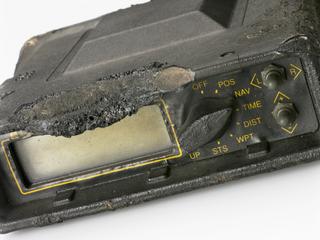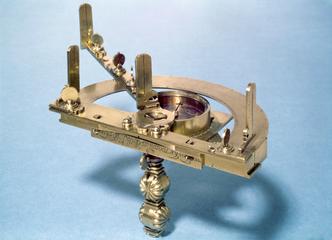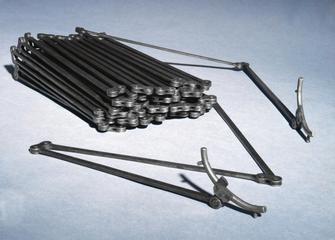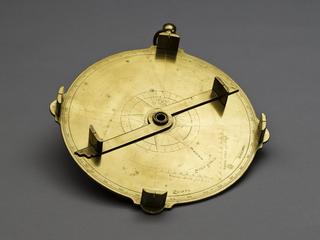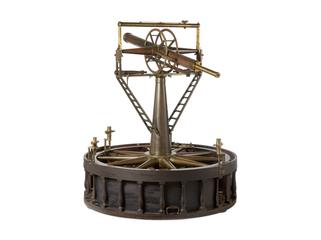
Simple theodolite, Italian, 1676
- maker:
- Johannes Macarius




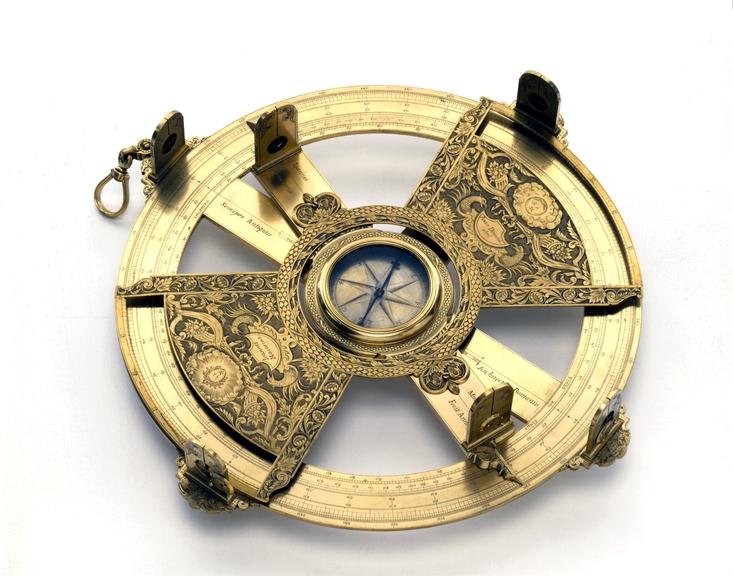


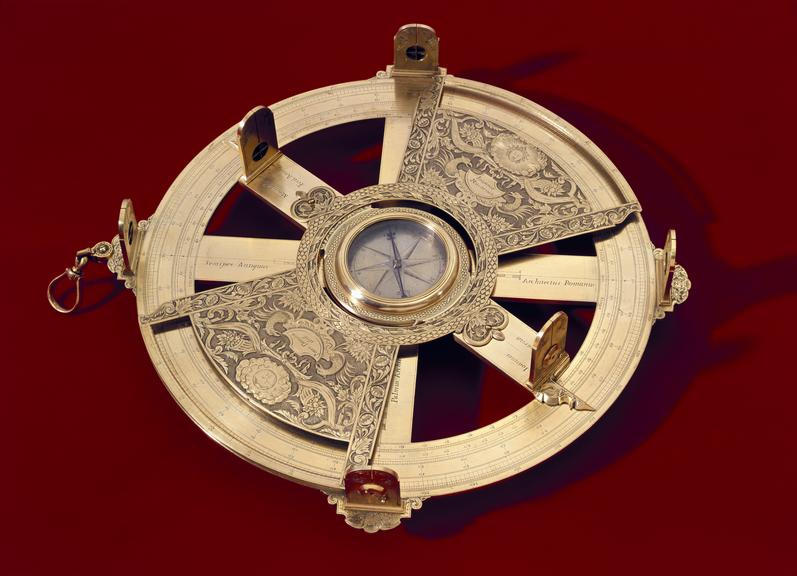
Simple theodolite by Johannes Macarius of Modena, Italy, 1676
Made by the architect Joannes Macarius of Modena, Italy, with the inscription 'Ioannes/Macarius/Mirandolanus/Fecit Anno 1676' engraved on the alidade. Circumferentors (with a complete circle scale) and graphometers (with a half circle scale) were widely used throughout the 17th and 18th centuries to compare angles, so that the user could work out how far away a distant object was. A joint on the support allowed for both vertical use when it was allowed to hang in a vertical plane by holding the suspension shackle and horizontal use when it was mounted on a stand.
A theodolite is the ideal instrument for measuring the angles of the network of triangles associated with the base line, but traingulation was nevertheless carried out wuth fair success before the theodolite emerged in anything like its present form. Angles were instead measured with a varity of instruments of which one of the most important was the cirumferentor. There are doubts about the identity of the inventor of this instrument but it seems likely to have been Gemma Frisius un the first half of the sixteenth century.
The butterfly-shaped plate surrounding the central magnetic compass has vernier scales engraved on its outer arcs. The compass allowed the orientation of the line of dight relative to the meridian to be determined.
Details
- Category:
- Surveying
- Object Number:
- 1880-195
- Measurements:
-
Overall theodolite: 370 mm x 360 mm x 100 mm, 2.7 kg
Additional alidade: 306 mm x 170 mm x 15 mm,
- type:
- simple theodolite and magnetic compass
- credit:
- Fulgence, Mons. (Paris)
